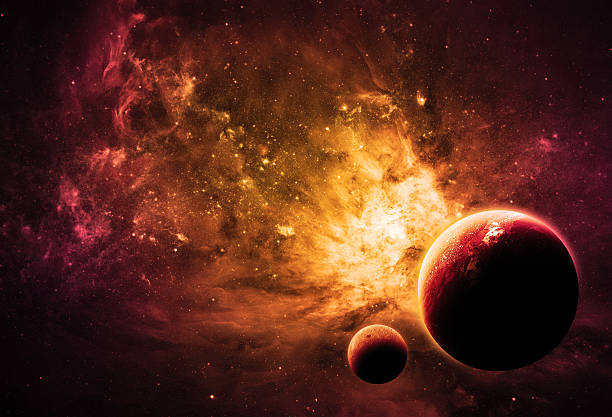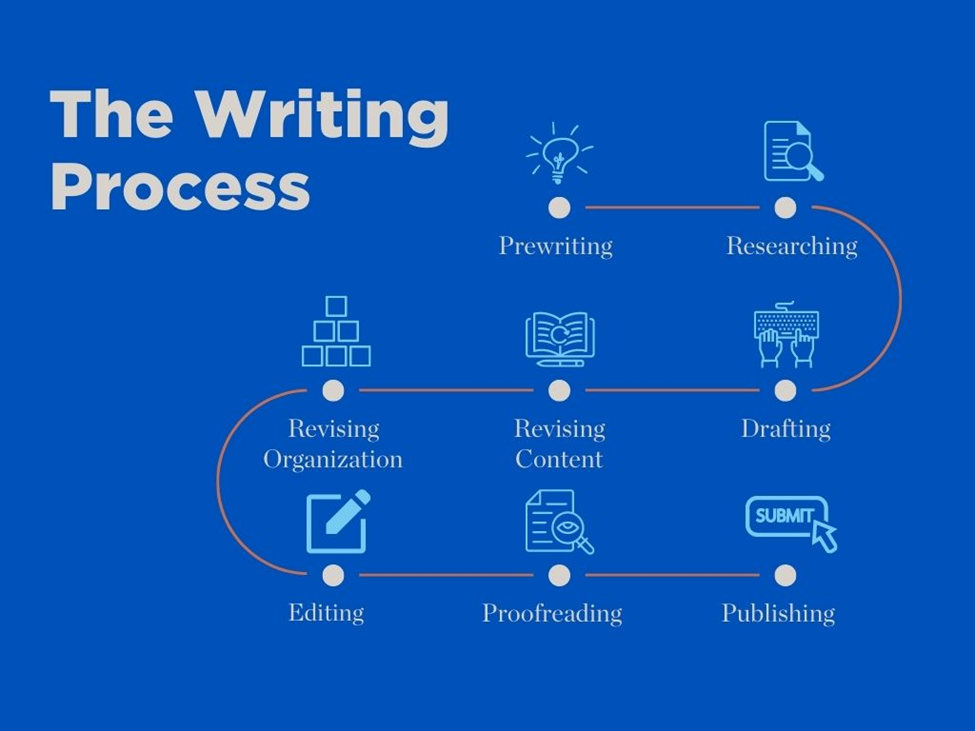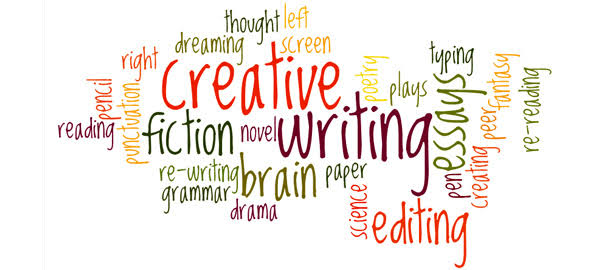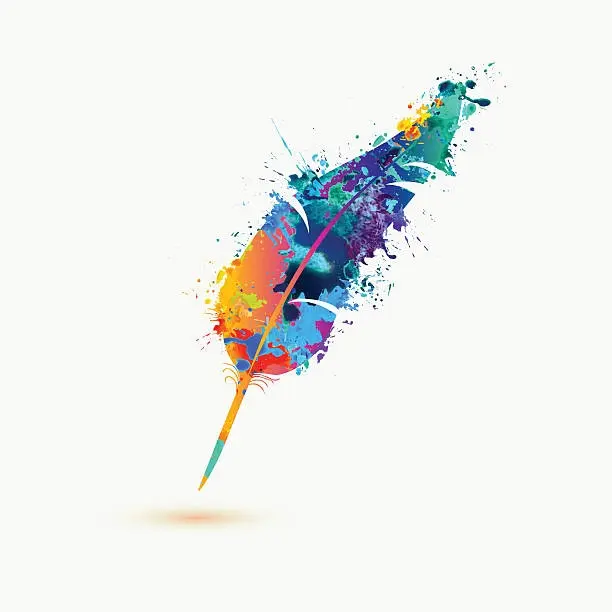Creative Writing | Birthing your Ideas |
Ever wondered how world-renowned ideas are birthed?/
Before we take a closer look at the topic of this blog post, I'd to take your mind a short scroll through creation's story./
READ THE POEM BELOW WITH ME!
/In the void, all I had was the beginning of the end.
A mysterious maze you'd say, yet, a journey unfolds, a tale to rend.
Felt like a spark tickling the flame of creation in me.
My mind begins to wonder, like ripples on a still pond,
A single thought expands, crawling into the scene from a neural link —a world unseen.
A mysterious maze you'd say, yet, a journey unfolds, a tale to rend.
Felt like a spark tickling the flame of creation in me.
My mind begins to wonder, like ripples on a still pond,
A single thought expands, crawling into the scene from a neural link —a world unseen.

My fingers, like a seamstress wielding needle and thread, bhegan to weave a narrative, a story only the end could tell.
Single letters, hesitant at first, stitched themselves together, forming words bolder and braver.
The ripples in my muse, traveled farther every time I bled out an ink.
Single letters, hesitant at first, stitched themselves together, forming words bolder and braver.
The ripples in my muse, traveled farther every time I bled out an ink.
Words cascaded an avalanche of language, a textual delight that buried the blank pages beneath their weight.
Each phrase, a brushstroke of blue ink, paints a vibrant tableau of history, capturing moments both joyful and sorrowful.
It's all becoming clearer —the void has had its fill, hence took form.
Each phrase, a brushstroke of blue ink, paints a vibrant tableau of history, capturing moments both joyful and sorrowful.
It's all becoming clearer —the void has had its fill, hence took form.

From a fleeting sensation, a muse materialized.
Whispering secrets only it knew,
Guiding my quill into meditative, yet intentional strokes.
Crafting a tapestry of emotions and experiences,
Painting a vivid picture of a world I alone saw within.
Whispering secrets only it knew,
Guiding my quill into meditative, yet intentional strokes.
Crafting a tapestry of emotions and experiences,
Painting a vivid picture of a world I alone saw within.
Indeed, it remains an enigma that, "Twice a story is told."
Sharing with my world a story that ended before it began.
Sharing with my world a story that ended before it began.
THESIS STATEMENT ABOUT THE CREATION STORY POEM
This poem uses contrasting imagery and metaphors to depict the creative process as a journey from emptiness to form, fueled by inspiration and culminating into a shared narrative.
INTRODUCTION
Creation's story poem captures the entire process of creative writing which usually starts from a mere spark of inspiration (the beginning of the end), cascading down to a muse (the poet's mind sets the thought process rolling), expanding and exposing the inspiration (Making brush strokes on canvas), review and refining the piece until it is woven into a masterpiece fit for the discerning mind.
Wait a minute! Before we attempt this premise, let's take a look at an aspect of writing a non-creative or technical piece. Let's delve in.
WHAT IS TECHNICAL WRITING?
Notably in the wider world is a seven-point system employed in technical writing such as writing books, research theses, and most publications involving textual language for information communication. The writing processes in this system include prewriting, research, drafting, revising, editing (and proofreading) feedback, and publication.

Technical writing is a form of textual communication that conveys information in a clear, concise, and understandable manner. It is commonly found in manuals, reports, guides, and documentation for various fields such as science, technology, engineering, and business.
The primary goal of technical writing is to provide information and instructions effectively, allowing readers to comprehend complex concepts, use products, or perform tasks.
Technical writers often use a straightforward and formal style, avoiding unnecessary embellishments, to ensure accuracy and precision in conveying their information.

TECHNICAL WRITING VS. CREATIVE WRITING
When it comes to creative writing, the above-fixed template of standard writing is slightly altered. Let's delve a bit deeper into the meaning, forms, and essential layers of creative writing, in relation to the Creation story poem.

WHAT IS CREATIVE WRITING?
Creative writing otherwise known as artistic writing, is any kind of writing that goes outside the norms of professional or technical literature. This form of writing involves harnessing your inner energies or tapping into your creative and imaginative mind to give a textual expression of your original thoughts.
I must say that creative writing entails conveying your ideas to your unique audience most originally and excellently.
Creative writing is a compendium of various streams and fashions that introduce new perspectives to the world as it paints a picture of a world seen from the writer's lenses. It's about weaving together a narrative or message that has a profound effect on the reader.
Creative writing is birthing the uncreated, and refining the created. It is conceptualizing the unseen and bringing it into the scene.
FORMS OR TYPES OF CREATIVE WRITING
When it comes to artistic or creative writing, the limits are boundless. Over the years this form of writing has evolved from fashion and styles like narrative and character development (fiction writing), streaming down to styles like non-fictional writing, playwriting, screenwriting, poetry, and songwriting (poetics).

For this type of writing, the primal focus is on being exceptionally creative and playing with ideas, rather than conveying facts and information as you will see in standard methods of writing books, research papers, and theses. The voicing in creative writing is flexible, as it preserves the refined version of the writer's imagination and tone.
Creative writing is a mental exercise as each idea is conveyed in a personalized fashion. There are lots of different types of creative writing I strongly advise you to engage in today.
a) Fictional writing: Examples may include writing short stories, novels, novellas, and film scripts.
b) Non-fictional writing: Includes memoirs, personal essays, and possibly speeches.
c) Playwriting: the art of writing plays and drama.
d) Screenwriting: often used in writing scripts for television and film broadcasting
e) Poetry and songs.
DIFFERENCES BETWEEN CREATIVE AND TECHNICAL WRITING
I wouldn't say creative writing isn't technical. However, the borderlines between them are outrightly delineated.
It is worth noting that both writing systems make use of similar writing processes but differ in certain respects.
It is worth noting that both writing systems make use of similar writing processes but differ in certain respects.
I) Creative writing is flexible and conveys information from a personalized perspective. It emphasizes artistic expression and imagination, often found in novels, poetry, and short stories. It prioritizes literary devices, emotions, and narrative flow.
II) On the other hand, technical writing regulates the impact of personalized voicing as it speaks more of facts and laws. It focuses on conveying information in a clear, concise, and functional manner. It is common in manuals, reports, and guides, aiming for precision and instructiveness.
Technical writing avoids embellishments and seeks to facilitate understanding, often employing a more formal and straightforward style compared to the more expressive nature of creative writing.
BENEFITS OF ENGAGING IN CREATIVE WRITING
Creative writing offers numerous benefits to the world and the writer. Some of the benefits engaging in creative writing include fostering self-expression, enhancing communication skills, boosting imagination, and promoting empathy by exploring diverse perspectives and emotions. It can also serve as a therapeutic outlet, helping individuals cope with stress and understand their feelings more deeply.

Additionally, engaging in creative writing can improve critical thinking and problem-solving abilities.
SUMMARY
This article has touched on the peripheral dimensions of both technical and creative writing types. In subsequent publications, we will be taking a closer look at the creative writing process, who a creative writer is, becoming a creative writer, and a host of others.

